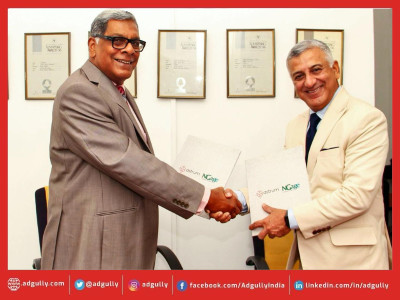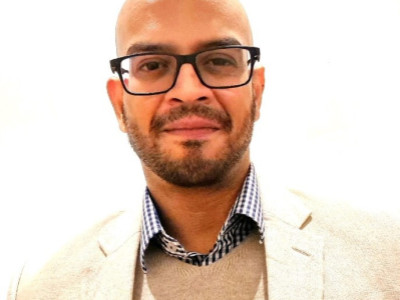What COVID-19 has taught us about crisis & issues management:Ashwani Singla
Effective crisis handling is about building the necessary capability through, simulations, drills and rehearsals so that you can iron out the process glitches, clarify roles and responsibilities and remove any bottleneck or blind spots, writes Ashwani Singla, Founding Managing Partner, Astrum.
A crisis is generally recognised as “an event of a nature or magnitude that changes, or has the potential to change, the way you conduct your business.” It usually involves the following:
- Potential/ actual loss of life/ serious injury to the public
- Causes significant damage to property/ interrupts your everyday work
- Hurts your credibility and that of your administration
Does it sound familiar in the current situation that we are facing with COVID-19? Would this qualify as a crisis? Yes, of course.
How many organizations were prepared to deal with such a situation? How many organizations had any sort of a ‘crisis plan’ that envisaged such a scenario? I am sure, not many.
So, what has COVID-19 taught us about crisis and issues management?
Let’s start from the beginning.
Lesson 1: Effective crisis handling is about preparedness. Invest in it and develop a crisis plan.
As this issue emerged out of China, governments waited and watched, but did not act. It is only when the issue turned into a crisis at home, governments scampered to take action. Some rather late.
In most cases, a crisis is an unaddressed issue that has the potential to blow into a crisis. Good crisis preparedness is all about monitoring and identifying issues that could pose a potential threat. For example, an overlooked safety protocol of operating a machine in a manufacturing plant that eventually results in a severe injury or death of a worker/s.
A good crisis preparedness plan games out possible scenarios in operations across customer journey, supply chain, production and distribution, employee and business governances to identify issues that have the potential to cause a business and/or reputation risk.
Lesson 2: Practice improves speed and effectiveness of your response.
The rate and pace of the contagion overwhelmed several governments, leading to forced choices. Many people such as administrators, health care professionals, small to large enterprises, amongst many had never faced such a situation before and hence, had to literally learn on the job! Governments are faced with inadequate infrastructure, supplies and facilities to cater to the multiple dimensions of the crisis. The lockdown in India created a crisis of migrant workers, which was not foreseen or planned. For example, what would you do when social media around the world suddenly gets flooded with customer stories of exploding batteries of a popular brand of cell phone and is the trending story across print, broadcast and online platforms in less than an hour? Would you be reading your crisis handbook?
Learning is invaluable, but should ‘on the job in a crisis’ be the ideal way to learn, when you really need to perform?
A good crisis plan can be put ‘in place’ with fancy manuals and handbooks, but how do you ensure it will be ‘in use’ when needed. Why does the Army sweat in peace? So that it does not lose blood in war.
Effective crisis handling is about building the necessary capability through, simulations, drills and rehearsals so that you can iron out the process glitches, clarify roles and responsibilities and remove any bottleneck or blind spots. More importantly, you are able to prepares resources you might need in a given scenario.
Last but not the least are the command and control structures. Rehearsals ensure that command and control structures are brought alive and function smoothly. I cannot but overstate the importance of ensuring absolute clarity about who does what in a crisis as too many cooks can only spoil the broth.
Lesson 3: Crisis can be asymmetric and do not follow a set pattern. Learn to adapt quickly.
Besides the human lives and safety linked to the COVID-19 crisis, there are so many livelihoods. One action has a domino effect on multiple aspects, which may not always be possible to conceive and plan ahead and rate and pace of this domino could be overwhelming. Livelihoods across the board have been impacted – from daily wager, to both blue- and white-collar workers. From the poor to the rich, from the rural to the urban, very few would remain untouched by the impact of COVID -19 on their livelihoods. From social security, job security, liquidity, to logistics, etc. I could go on about the many things to be factored into the planning to mitigate its impact.
The crisis planning should provide an effective framework of action whilst allowing for flexibility to adapt/ respond to the changing situation, being agile, adaptive and responsive within the framework of actions allows us to act without losing sight of the objective.
Lesson 4. Crisis management is strategic. Put your best minds to work.
Facing the COVID-19 situation, health & safety, hygiene & sanitation, economic stability, environment, jobs, industry, law & order, communication, essential services like food, drinking water, medicines, cooking gas, fuel, transportation, utilities, etc., are only some of the local dimensions that the Government has to consider besides the international implications like immigration, diaspora, trade & commerce, defense, and so on. Each and every decision is interlinked and requires integrated thinking. No one person or department can handle it alone and center and states have to work together.
For example, a major fire in a manufacturing facility located near habitats can involve employees and their families, the local communities, local/ State/ National administration and legislators, regulators, the fire brigade, law and order, customer supplies, production, healthcare infrastructure in case of injuries and deaths, media, social influencers, community leaders, civil society, amongst others. Careful and calibrated actions are the need of the hour and, therefore, it needs a team of experts to not only plan but execute with clarity and purpose. Information is limited, facts are often muddled, and time is a major constraint, yet decisions have to be made and what you do and say can come back to haunt you or cause irreparable damage to your business and reputation.
Crisis Management is a serious business, so bring in your best minds across functions and departments plan and work together and you will come out of it stronger.
Lesson 5. Communicate and Engage. Employees First.
In a naked world, everything is visible and in real time. Whether it is press, social media junkies, citizen journalists, experts, academics, consultancies, research houses and several others, everyone is a reporter and/or an expert or has access to ‘inside information’; they all have something to offer, whether in news channels or on social media. WhatsApp forwards, including documents, videos, memes, pictures spread faster than COVID-19 itself.
People want to know fundamentally answers to usually the following questions:
- What happened?
- Why did it happen?
- Who is responsible?
- What are you doing about it?
- When would things return to normal?
- What does it mean to my life?
It’s imperative to recognise that the real danger is the spread of rumours, speculations and fake news. Understanding the need for verifiable facts, useful information and quashing rumours and fake news is the immediate priority. Further news, views and information from known and recognized sources should be made easily accessible across multiple platforms.
As the situation evolves, people want to be updated with latest developments in a situation like COVID-19 want to know more about the pandemic, the extent of the risk they face and how to protect themselves.
Based on information available and my own experience, government in India ‘controlled the message’ via daily press briefings, regular distribution of press statements, use of OTT applications like WhatsApp to create information booths, groups were formed by local administrators which included RWAs (resident societies), civil society members, members of the press and community leader, helplines were set up via phone and email and they took to social media using twitter and Facebook tocommunicate and engage the public.
Information was made available online various government websites, SM platforms with information and collaterals for further amplification, apps were launched to support the efforts of the government to track and trace while also establishing a one to one communication.
Going back to the fire in a facility example, we can now visualize the multi-dimensional communication that is needed to ensure that every stakeholder is informed, kept updated on developments and engaged to address their concerns. Just as in COVID-19, communicating with the citizens of India come first, in business, communicating with the employees and their families always come first. They are the best ambassadors and advocates of the company in a crisis.
In conclusion, they say adversity is the best test of character and your true character shows when you are faced with an adversity. How you act during a crisis can either destroy you or make you stronger than ever before.
Crisis is the perfect storm, yet you can Do Right and Do it Right.
Also Read:
Parle is optimising productivity across all functions: Krishnarao S Buddha
















Share
Facebook
YouTube
Tweet
Twitter
LinkedIn